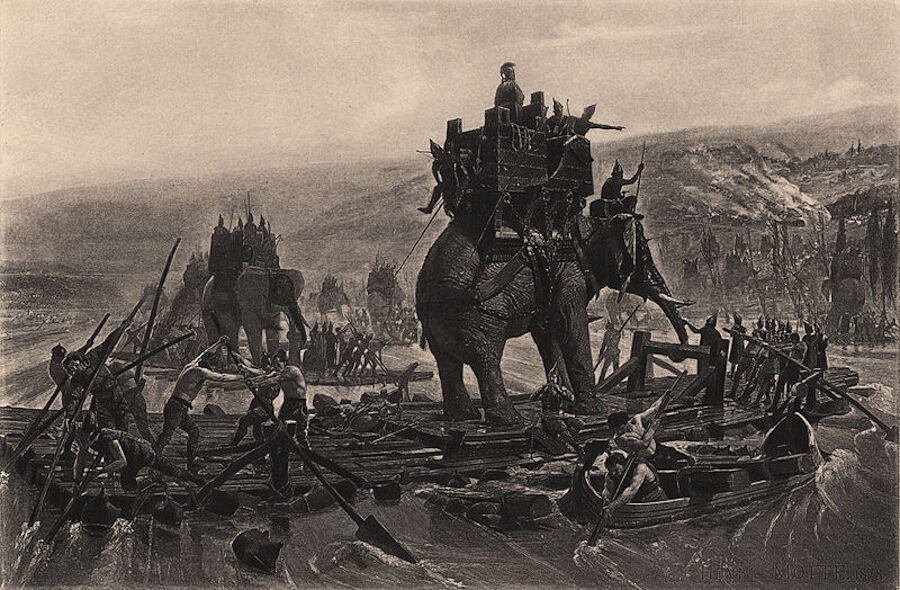Where did Hannibal cross the Alps? Ancient dung may hold clues.
Loading...
By 218 BC, a bloody war raged between the Mediterranean superpowers Rome and Carthage. To shift the long fight in favor of Carthage, ancient records say, General Hannibal conducted one of the most notable and mysterious operations in military history: a thousand-mile march across the Alps to surprise the Roman forces in Italy with elephants and an army.
Researchers believe the improbable crossing not only occurred, but was a vital success in helping Hannibal crush the Roman army before his eventual defeat at Zama more than a decade later. But the details surrounding the trek have continued to baffle historians into the modern era.
Now, scientists believe they have discovered clues that could solve at least a portion of the 2,000-year-old mystery.
Old horse droppings may yield fresh insights about where Hannibal and his army crossed the Alps, according to a study published Monday in the online journal Archaeometry.
"For more than 2,000 years historians, statesmen and academics have argued about the route he took," co-author Dr. Chris Allen, an environmental microbiologist at Queen's University Belfast, wrote in a column for The Conversation. "Even Napoleon is known to have shown an interest."
Estimates place the size of Hannibal's force at around 25,000-30,000 infantry, thousands of horses, and 37 elephants.
Only a handful of paths would have allowed the army to sufficiently water and tend to that many animals and men. But there had been no firm evidence to support one theory over another, until the recent discovery of what the study calls a "mass animal deposition" event.
Using a range of methods from microbial analysis to environmental and geomorphic investigations, scientists found a large amount of ancient fecal matter in a patch of mire near the Col de Traversette pass in the Alps, along what is now the French-Italian border. The pass was first proposed as a possible crossing point for Hannibal’s army in the 1900s by biologist Sir Gavin de Beer.
The amount of fecal matter is consistent with "constant movement of thousands of animals and humans" and carbon isotope analysis links some of the dung back to horses possibly used by Hannibal, according to Dr. Allen.
"Over 70 per cent of the microbes in horse manure are from a group known as the Clostridia, that are very stable in soil – surviving for thousands of years," Allen said in a university press release. "We found scientifically significant evidence of these same bugs in a genetic microbial signature precisely dating to the time of the Punic invasion."
The microbe findings are a strong indicator that Hannibal may have used the Col de Traversette in his crossing. They are not yet definitive, however.
"The gene analysis needs to be expanded with more genetic sequencing of other genes, if this conclusion is to be certain," Allen wrote in The Conversation.
If further sequencing is able to better link the fecal matter to horses or elephants used by Hannibal, it has the potential to solve many of the remaining mystery around the crossing. But it also opens a new set of questions for researchers to ponder.
The Traversette pass is treacherous and certainly one of the most dangerous ways to traverse the Alps alone and even more so with tens of thousands of troops and animals.
"So why did Hannibal choose the more difficult Traversette crossing?" Allen asks. "At this point we can only speculate, but he may not have had a choice at all.... In these relatively ancient days there were Gaulish tribes in the region, a major military force, and Hannibal may have been forced to take this more difficult and unexpected route to avoid a devastating ambush."






